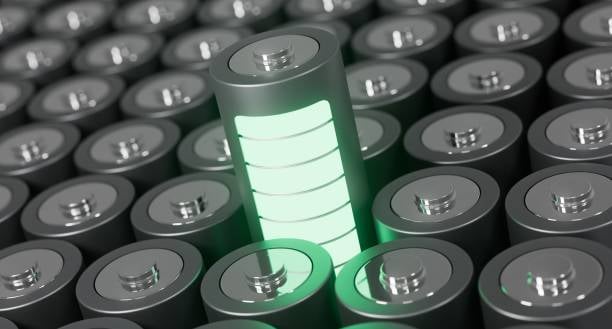Abstract
There are many factors that affect the safety of lithium-ion power batteries. Among them, the battery safety problems caused by the cracking of the positive electrode plate are easy to produce burrs, abnormal protrections and fractures in the subsequent electrode assembly process, which have attracted much attention in recent years.
In this paper, through the experiment of mixing design, the ratio of auxiliary materials in the anode material is optimized to reduce the roll elongation of the electrode sheet. At the same time, adjusting the thickness of the ceramic layer can effectively control the difference of the elongation of the active material coating area and the ceramic layer electrode sheet in the rolling process, reduce the arc rate of the electrode sheet after paving, and explore an effective method to solve the crack of the pole ear during the preparation of the positive electrode sheet of the power battery.
1.1 Experimental process
1.1.1 Specific experimental methods
The solid content of ternary NCM811 is set at 95%, and the total solid content of PVDF, SP and KS6 is 5%. The content of solvent NMP in the slurry is fixed at 30%. The verification ratios of PVDF, SP and KS6 were 1%-2%, 1%-2% and 1.2% -2.4%, respectively. PVDF, SP, KS6 ratio optimization method using Minitab software, mix optimization design (DOE), simplex design diagram, extreme vertex design and center point strengthening scheme, 7 groups of experiments.
1.1.2 Slurry preparation of electrode sheet
The specific process is as follows: First, PVDF is dissolved in NMP solvent, PVDF solution with 7% solid content is formed in the agitator, and transferred to the stainless steel bucket for storage; Subsequently, SP, KS6 and NMP were pre-stirred in a blender for 30min; Then add the prepared PVDF solution and stir for 30min; Finally, the NCM811 is divided into two times according to weight and added to the stainless steel drum, each stirring time is 20min; In the above stirring process, the parameters of the agitator are set as the revolution speed of 25 revolutions /min and the rotation speed of 800 revolutions /min, and the total mixing time is 240min.
2.1 Conclusion:
In this paper, the elongation of the polar plate can be reduced by optimizing the content ratio of PVDF, SP and KS6 under the condition of obtaining the same compaction density. At the same time, the elongation after rolling can be controlled by controlling the thickness of the ceramic layer before rolling and the thickness after cold pressing (the best ratio is 120%±9%). Both effects can effectively reduce the arc rate of the positive electrode sheet after paving, and can solve the problem of the root of the pole ear cracking during the preparation of the positive electrode sheet of the power battery.

